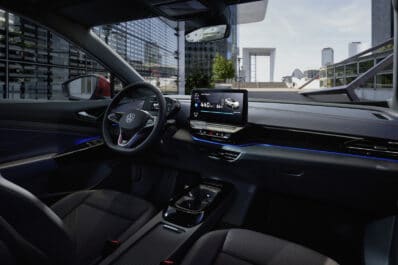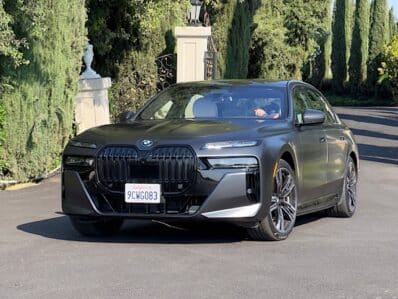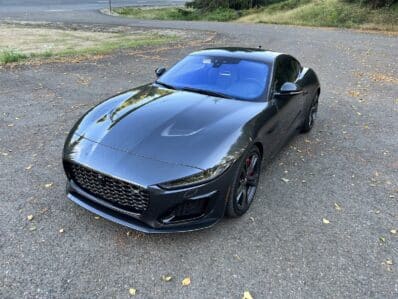
Need a compact luxury sports sedan? You have a tempting array of options, including the BMW 3 Series, Mercedes-Benz C-Class, Genesis G70, Alfa Romeo Giulia and the Cadillac CT4.
And then you have the Lexus IS, last re-engineered for the 2014 model year, and given another nip and tuck for 2021 to keep it competitive. Yes, it outsells its American, Italian and Korean competition, but the Lexus still trails its German antagonists. Is this makeover enough for it to prevail in a class where German marques predominate?
Overview
The answer is no. While the IS receives a host of welcome updates for 2021, they don’t change its fundamental personality, although that’s not a bad thing, far from it. Offered in IS 300 and IS 350 models, buyers get a choice of rear-wheel or all-wheel drive.
All models get V-6 power except for the base rear-wheel-drive IS 300. It makes do with two fewer cylinders. For 2021, for the first time, the athletic F Sport trim will only be available on the IS 350. Lexus supplied an IS 350 F Sport with rear-wheel drive for this weeklong test.
Exterior
The new model’s design modifications are subtle but effective. The grille is larger, the headlamps slimmer, and there’s unique front and rear bumpers, rocker molding and updated side vents. The whole look is aggressive and perhaps the best iteration of Lexus’s aggressively angry, angular, animated design language — and perfectly suitable.
There’s nothing demure about this sedan, something that can’t be said of its it visually quieter competition. It’s compact, but boisterous. The 19-inch wheels and carbon fiber rear lip spoiler add the perfect touch. Eighteen-inch wheels are standard on most models.
Interior
The test car’s optional Circuit Red F Sport pleather (aka faux) seats were a classic contrast to the car’s silver exterior. The front seats are standard heated and ventilated, and are offered alongside a heated, leather-wrapped steering wheel. Special F Sport trim is so befitting of its personality, you’re surprised it isn’t offered throughout the line-up.
The interior is largely unchanged, and the overall appearance, fit and finish are commensurate with the car’s $42,995 starting price but feels somewhat dated. The F Sport seats firmly hold you in place without being punishingly stiff.
The instrument panel and console snugly envelope you, although head and leg room are good. Rear-seat leg room is adequate, and dependent on the kindness of those up front. The trunk is an adequate 10.8 cubic feet, and plainly trimmed. There are no fold-out cargo hooks, and the gooseneck trunk hinges rob the interior of what would otherwise be useable space.
Powertrain
The base IS 300 is fitted with an intercooled 4-cylinder engine that produces 241 horsepower and 258 pound-feet of torque through the rear wheels. Adding all-wheel drive to your IS 350 brings with it a double-overhead-cam 3.5-liter V-6 rated at 260 horsepower and 236 pound-feet of torque. But the big dog on the block is the top-of-the-line IS 350. Its double-overhead-cam 3.5-liter V-6 produces 311 hp and 280 lb-ft of torque and your choice of rear-wheel or all-wheel drive. An 8-speed automatic transmission with paddle shifters is standard on all models except the IS 350 with all-wheel drive, it gets a 6-speed automatic transmission with paddle shifters instead. All models require premium unleaded fuel.
Safety and Technology
Driver assistance safety systems include a pre-collision system with pedestrian detection, lane departure alert with steering assist, road sign assist, lane-keeping assist, radar cruise control, automatic high beam, and blind-spot monitor with rear cross-traffic alert.
Technologically, the most welcome news is that Amazon Alexa, Android Auto, and Apple CarPlay compatibility is finally standard. An 8-inch touchscreen is standard, a 10.3-inch touchscreen is optional. Lexus’ infotainment user interface remains largely the same and is badly in need of an update in look and function. It lacks the simplicity and appearance one expects in a luxury ride. But at least you are no longer forced to use the car’s haptic touchpad to operate it.
Driving Impressions
In an era where preposterous gobs of horsepower are now common on luxury vehicles, and roads are clogged with slow-moving traffic, the IS 350’s 311 horsepower seems sufficient. But the V-6 doesn’t seem all that powerful lower in the rev band. Stomp on the throttle, and it wakes up, but it shouldn’t be necessary given the IS 350’s place in the line-up.
Similarly, the 8-speed automatic feels far more responsive when you flick the console-mounted gear lever manually rather than using the slow-to-react paddle shifters or leaving it to its own devices. For the power hungry, most of this should be addressed when the 2022 Lexus IS 500 F Sport Performance model appears in the fall, powered by a 472-horsepower naturally aspirated V-8. However, only 500 of the IS 500 will be produced.
The IS 350 F Sport has unique suspension tuning, which makes it a far more fun proposition than its more plebian compatriots thanks to the test car’s optional Dynamic Handling Package with an adaptive suspension and limited-slip differential. This produces the behavior you expect in a sports sedan, albeit with an incredibly refined demeanor typical of a Lexus. It’s a very easy car to drive quickly with a lack of body roll, sharp reflexes, and accurate, linear steering. Its dynamics are exemplary.
And while the different driving modes are appreciated, including ones unique to this trim level, would someone at Lexus rewrite the code so that it’s not in Eco mode every time the car is started? This does nothing to help your street cred, bubby.
Wrap Up
While the 2021 Lexis IS 350 F Sport features some welcome improvements in performance and a better looking exterior, the interior’s increasingly dated appearance remains unchanged. And although its performance is commendable, its competitors are more dynamically compelling than this angular athlete. Although far from a bad choice in a luxury compact sports sedan, it’s not at the top of the list.











